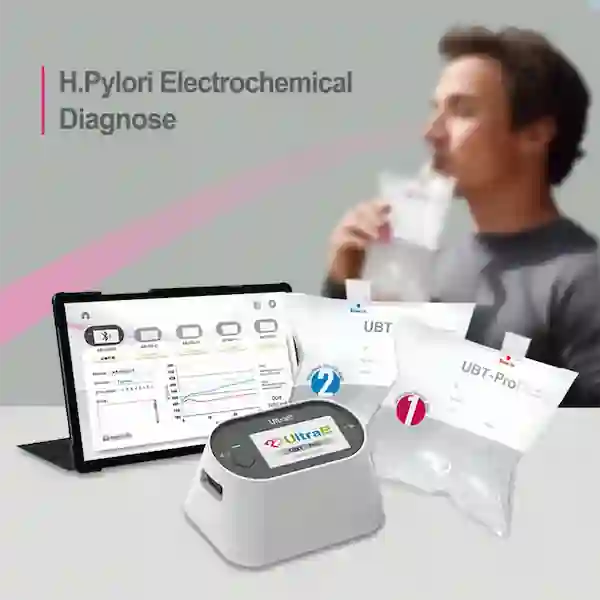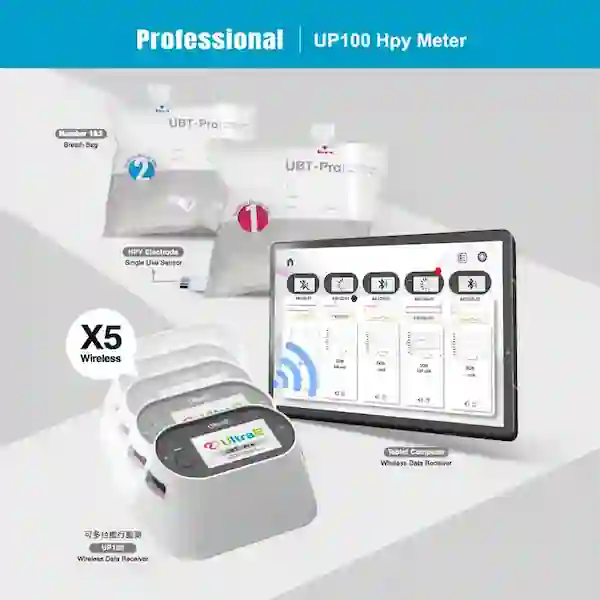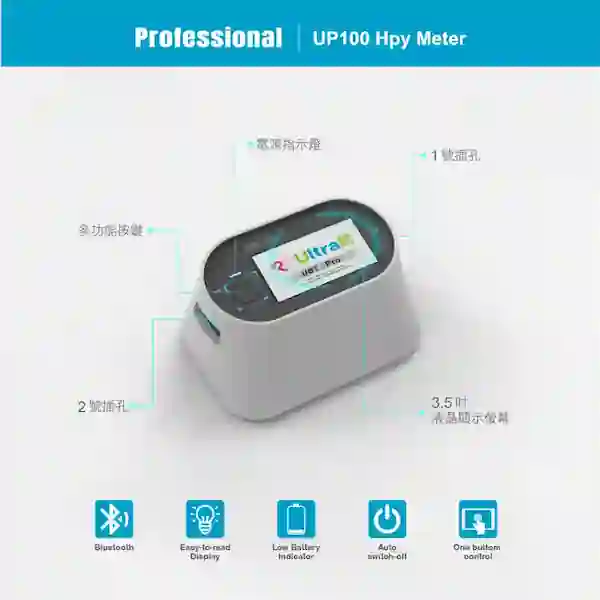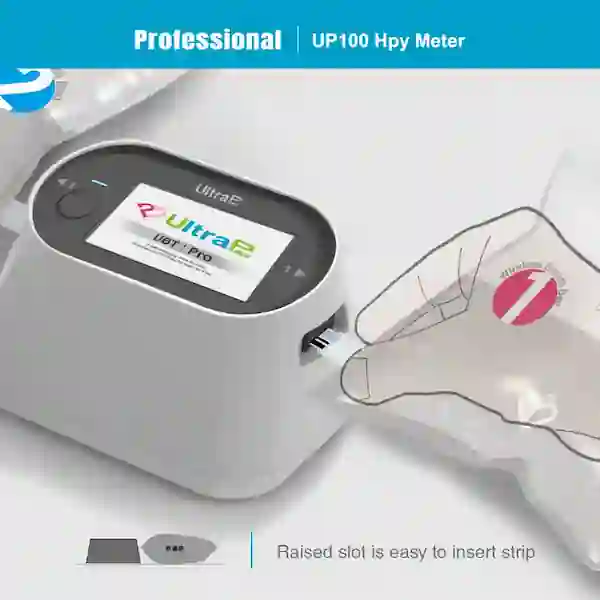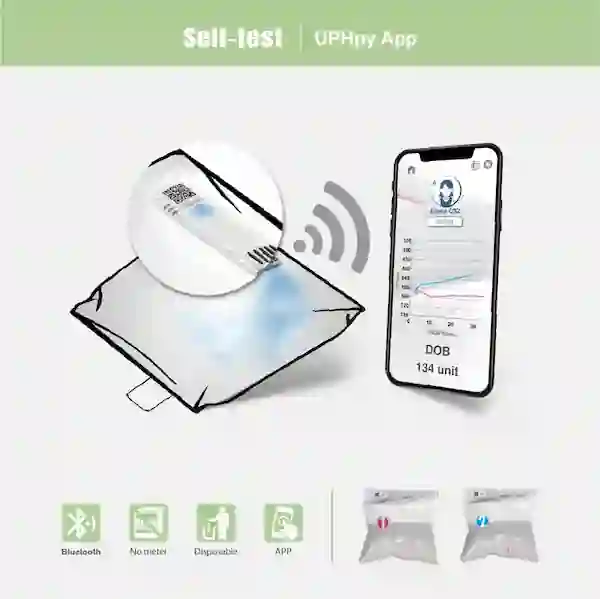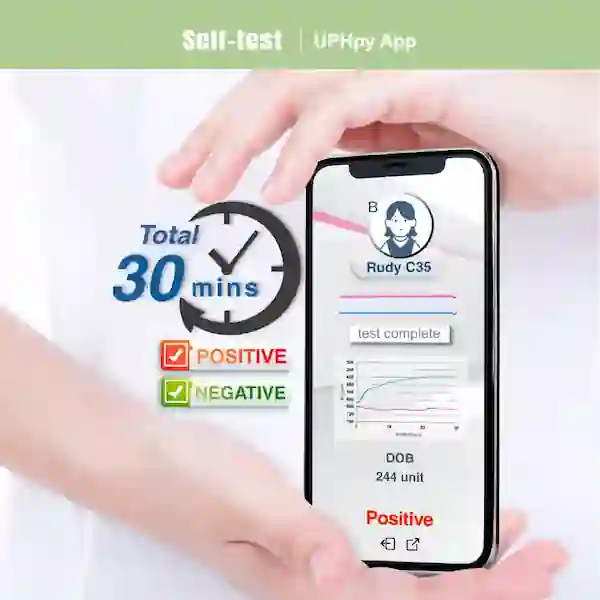

UitraPeace-Instant H. Pylori Urea Breath Test kit-Pro
(UBT-Pro)
- ・Non-invasive testing method
- ・Obtain results within 30 minutes
- ・Assess treatment effect before and after
- ・Automatic judgment on the result
- ・Two Versions: Professional and Self-Home testing
About Helicobacter pylori
What is Helicobacter pylori?
Infection with Helicobacter pylori

Nearly half of the global population is estimated to be infected with H. pylori

Ref:
1.JGH Open, Volume: 7, Issue: 1, Pages: 3-15, First published: 21 November 2022, DOI: (10.1002/jgh3.12843)
2. Ali Pormohammad, J Cell Physiol, 2019;234:1208–1218
Diagnose for Helicobacter pylori Infection
| Invasive / Non-invasive | Invasive | Non-invasive | |||
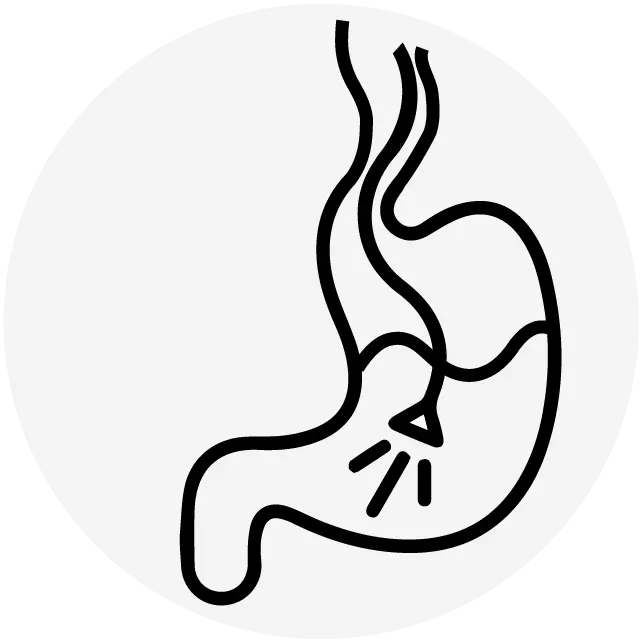 | 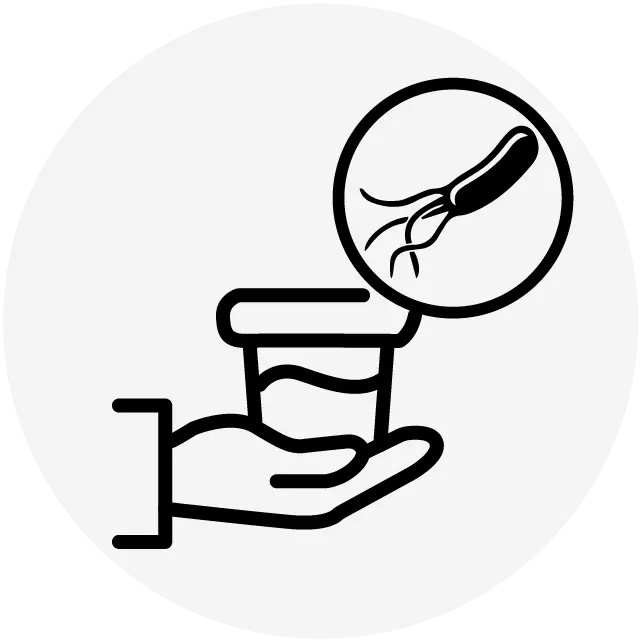 |  | 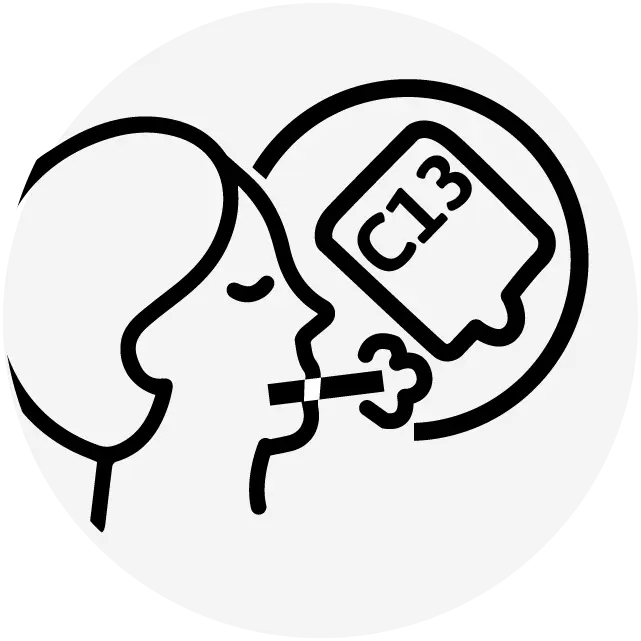 |  | |
| Test method | Gastroscopy | Stool Antigen Test | Serologic test | 13C Urea breath test | Instant-UBTIW |
| Sample type | Stomach tissue | Fecal | Blood | Exhale breath | Exhale breath |
| Time | 1-2 hr | 3-7 days | 3-7 days | 3-7 days | <1 hr |
| Cost | High | Low | Low | Medium | Medium |
| Advantage/ Disadvantage | Uncomfortable | Available before and after teatment | Not Available after treatment.Does not distinguish between active and past infection | Available before and after teatment | Available before and after teatment |
| Accuracy | High | Low | Low | High | High |
UltraPeace-Instant
Helicobacter pylori urea breath test kit
Detection Principle
When the stomach is infected with Helicobacter pylori. The orally given urea is hydrolysed by the enzyme urease of H. pylori and carbon dioxide and ammonia gas is expired in breath . By analyzing the concentration of ammonia gas expired through breath and comparing it with the baseline value before drinking urea. It can help to determine the presence of Helicobacter pylori infection.
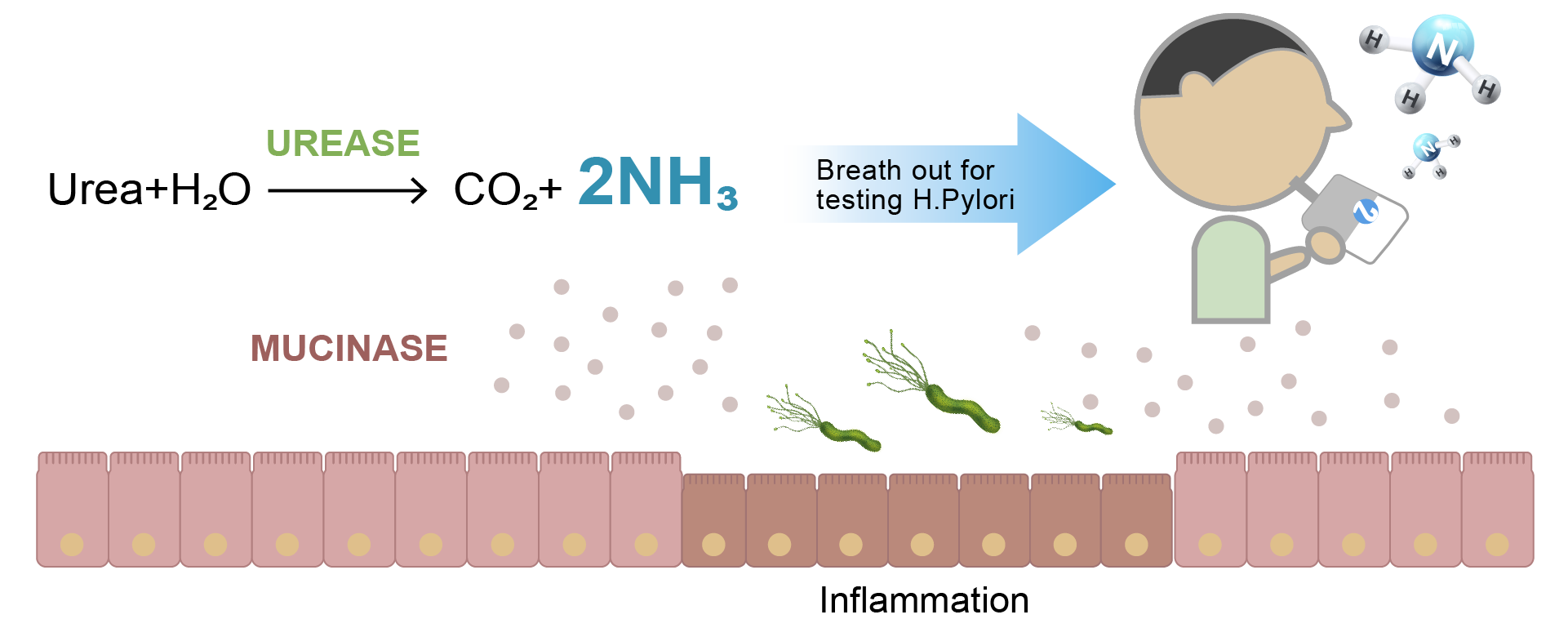
Core Patent Technology
Disposable Gas pH Electrochemical Test Strip
Utilizing patented developed nanoporous hydrogel membrane to capture ammonia gas from exhaled breath, the gas undergoes hydrolysis on the electrode surface. Through electrochemical detection, the pH value of the gas is obtained, enabling the calculation of ammonia gas concentration in the exhaled breath.
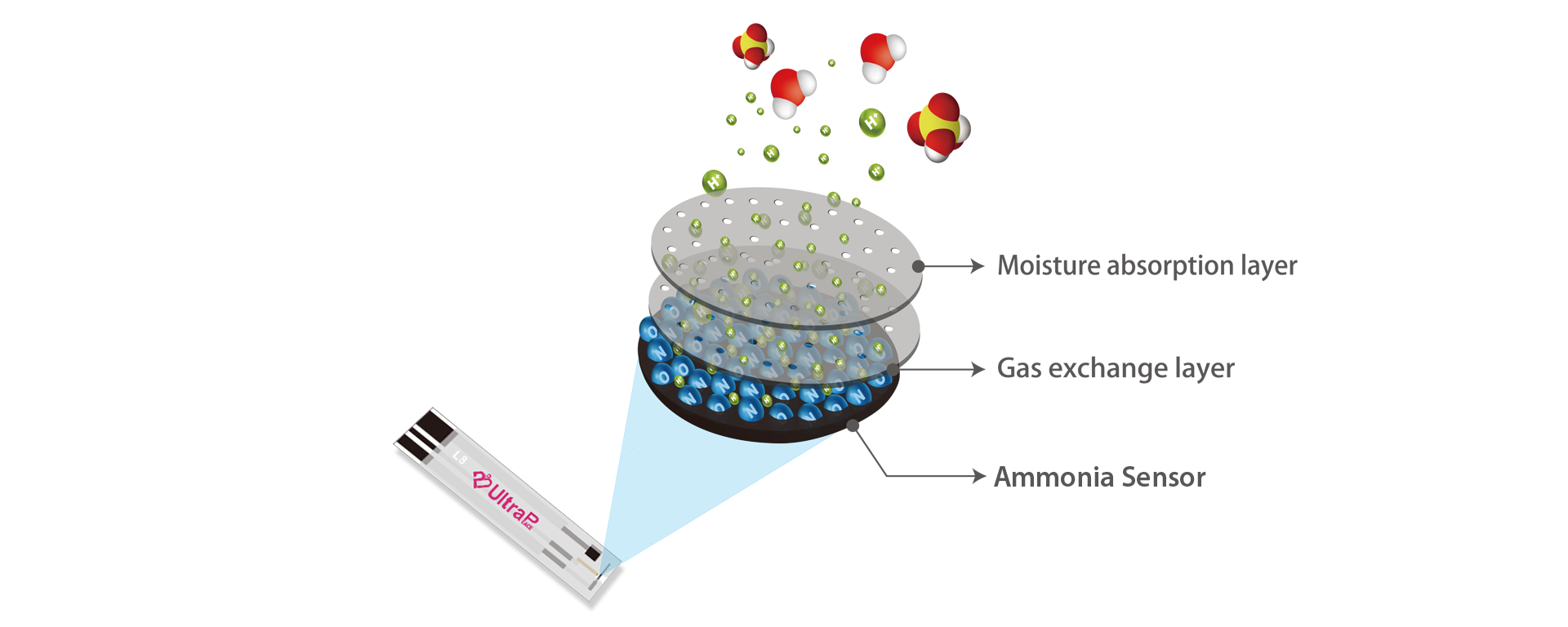
UltraPeace vs.13C Urea Breath Test?
Replace normal urea with isotope-labeled13C urea
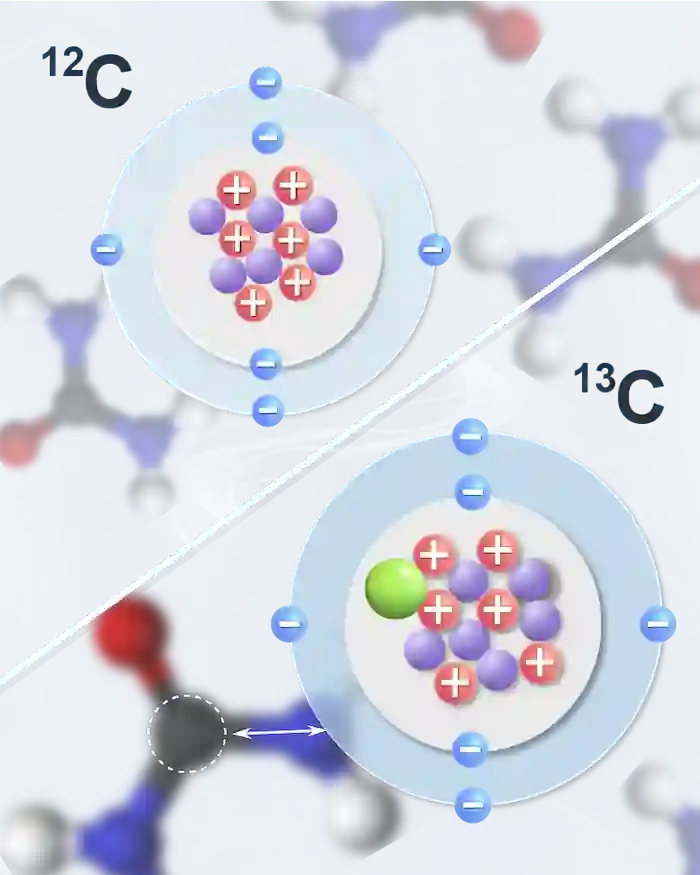
No need to send samples to a testing center; Get report on-site within 30 min

Two versions of the Rapid BUT Test Kit
meet different user needs
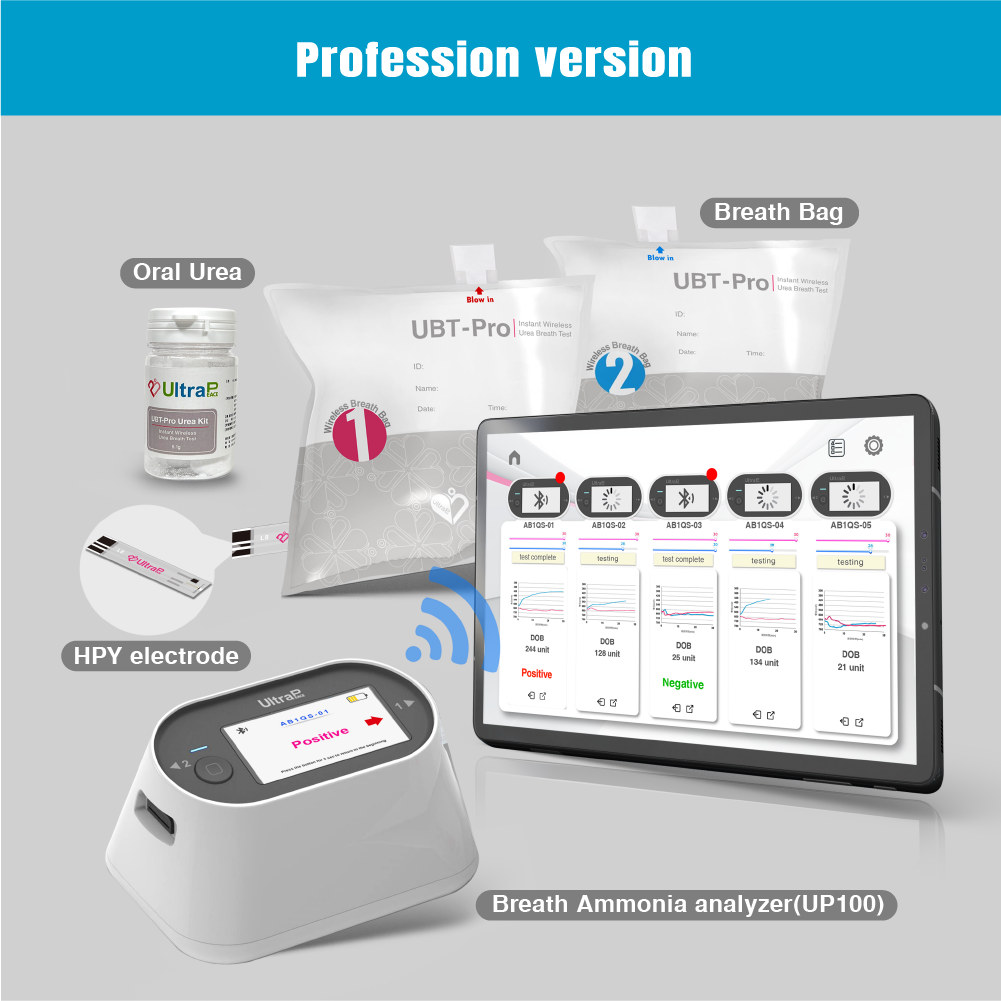
One-Button
automatic detection
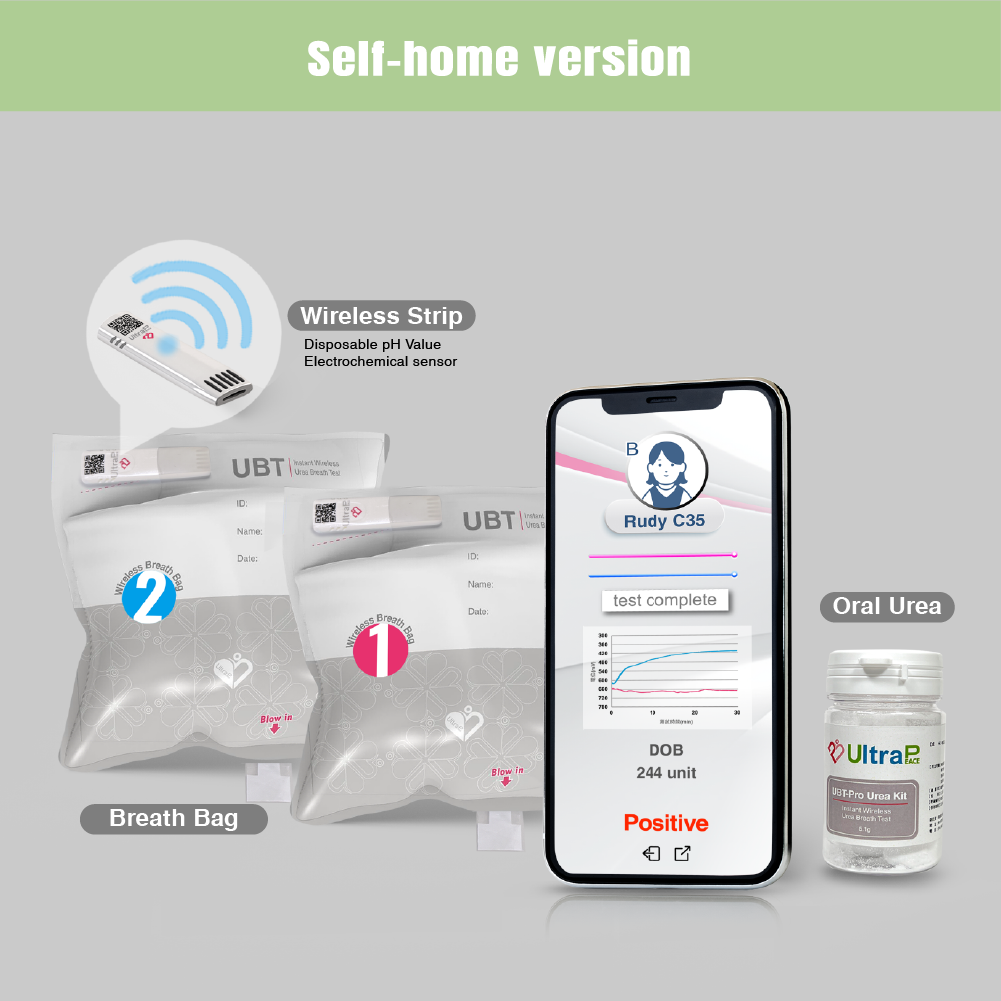
Patented integrated test strips,
No meter required
How to use UltraPeace UBT kit?
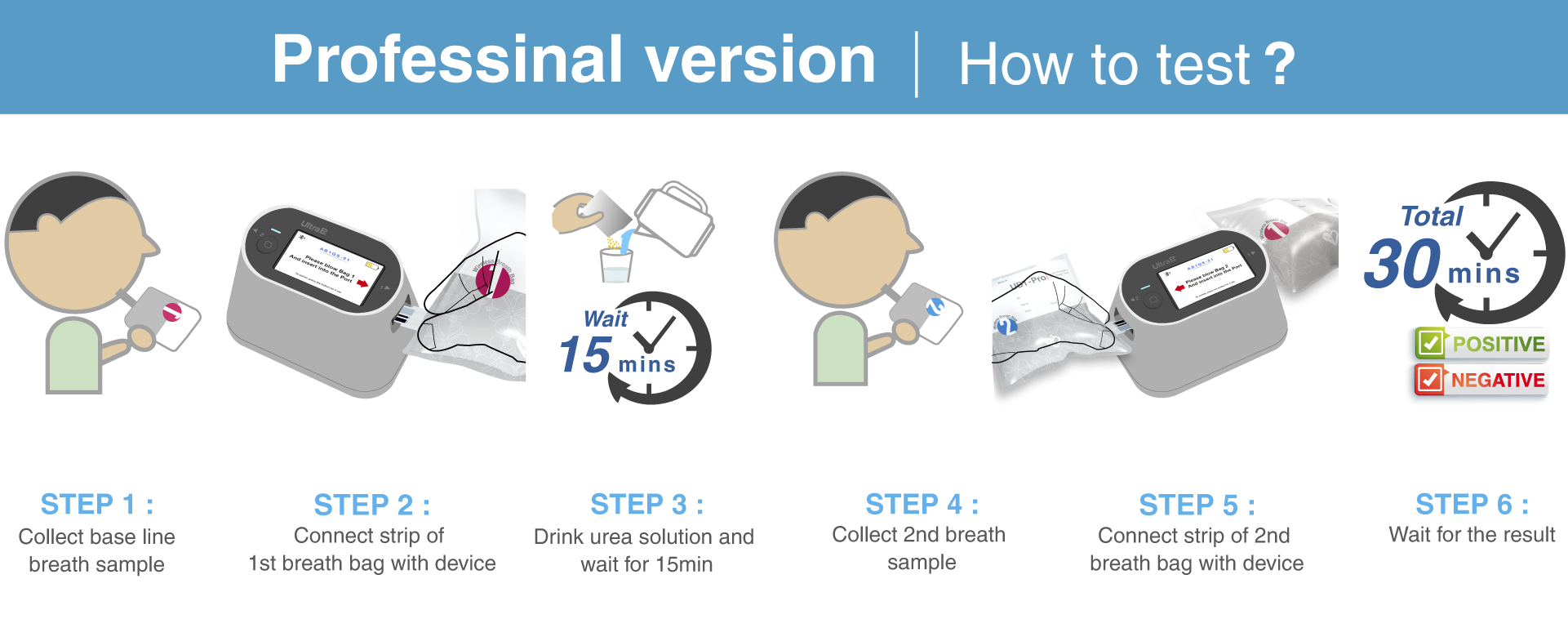
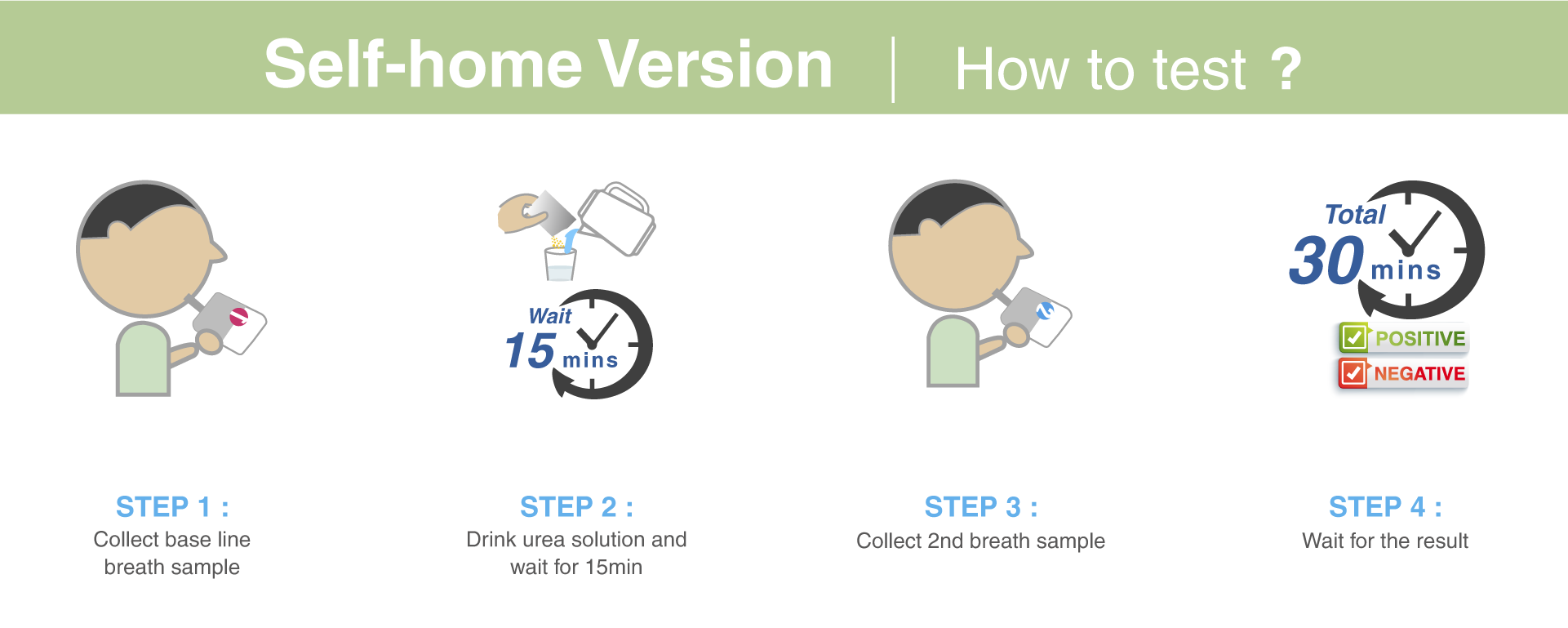
For research only










